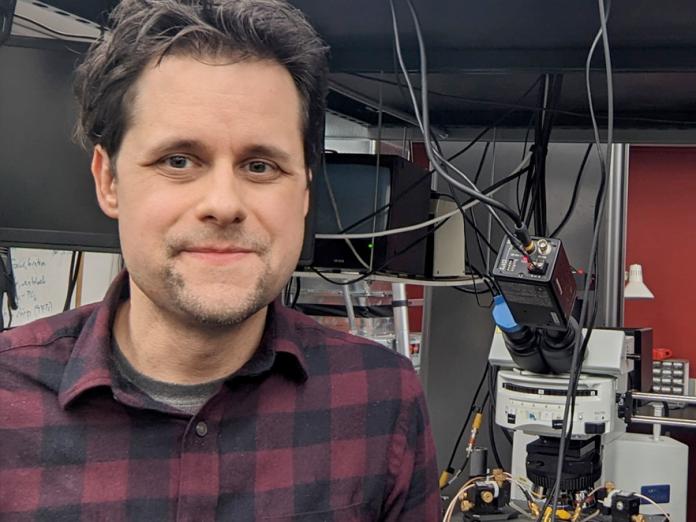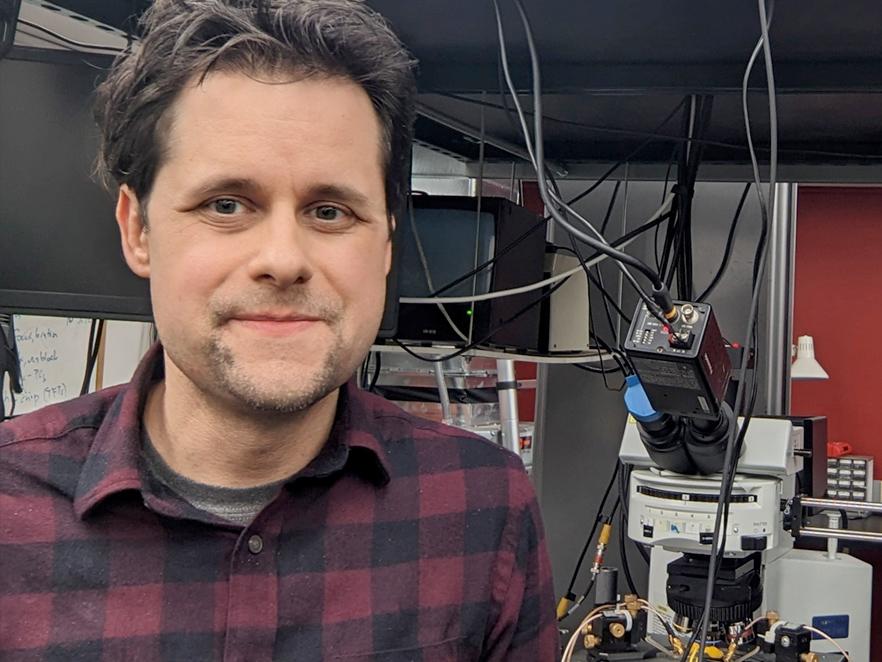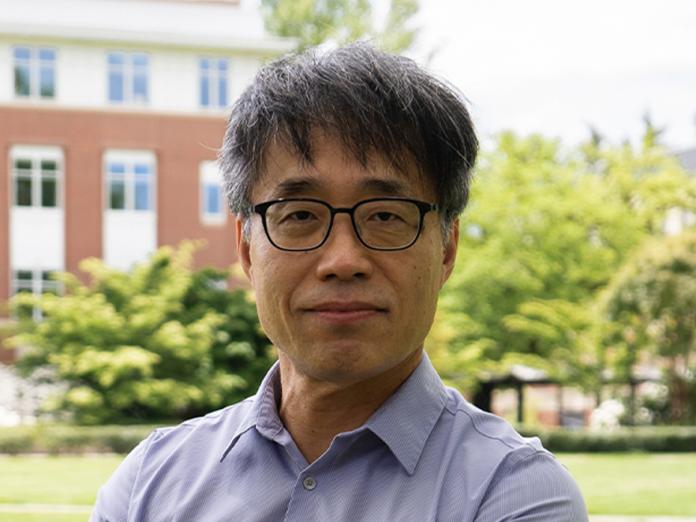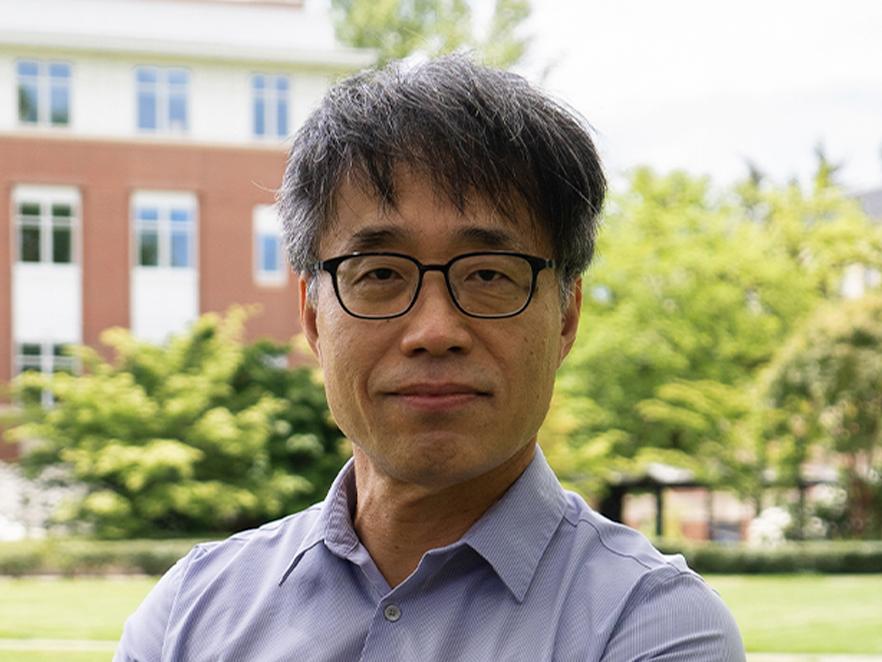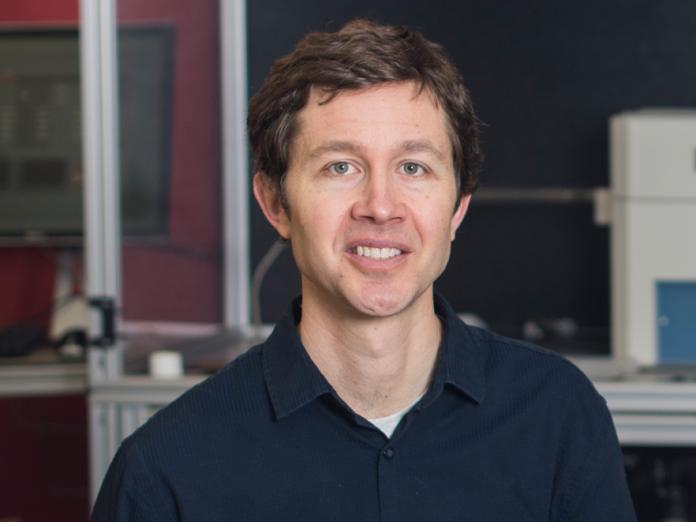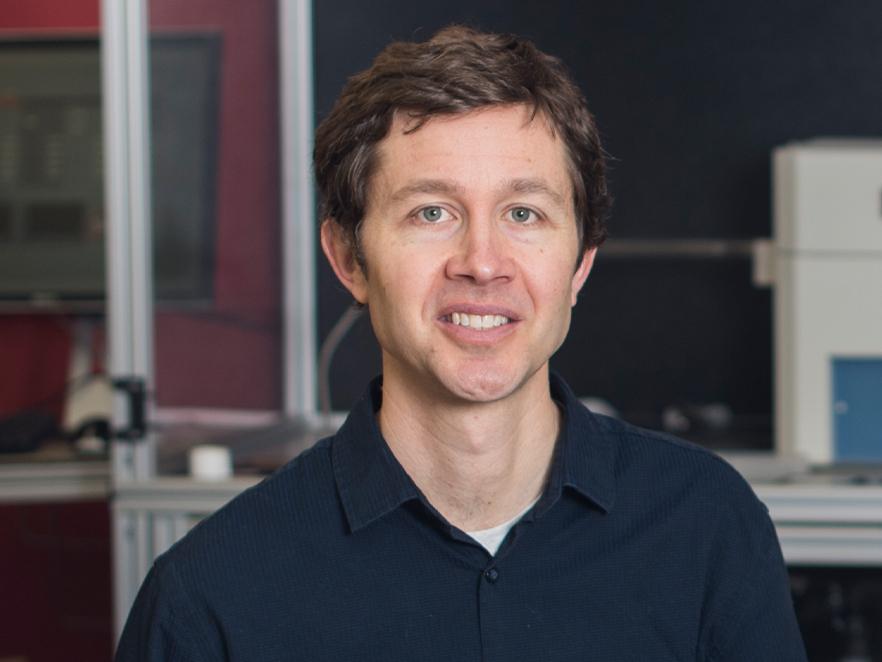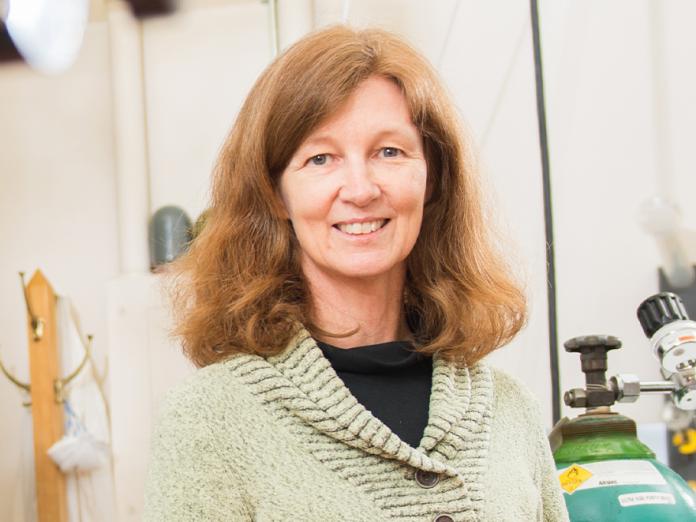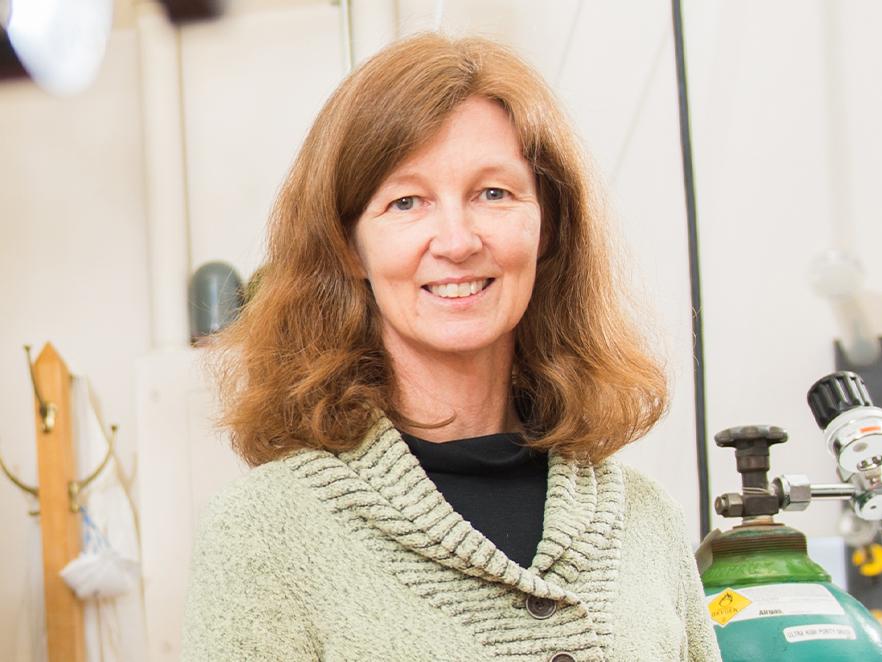Condensed matter experimental physicists use a wide array of optical, thermal, magnetic and microscopic methods to discover new physical properties in materials. These new properties can range from making solar cells more efficient by multiplying electronic charges to discovering new phases of matter such as condensates and superconductivity. This research is also used to discover new materials by physically growing them and fabricating devices. The condensed matter team at OSU has particular strength in the areas of ultrafast spectroscopy and the study of nanomaterials and organic semiconductors.
Condensed Matter Experiment and Condensed Matter Theory
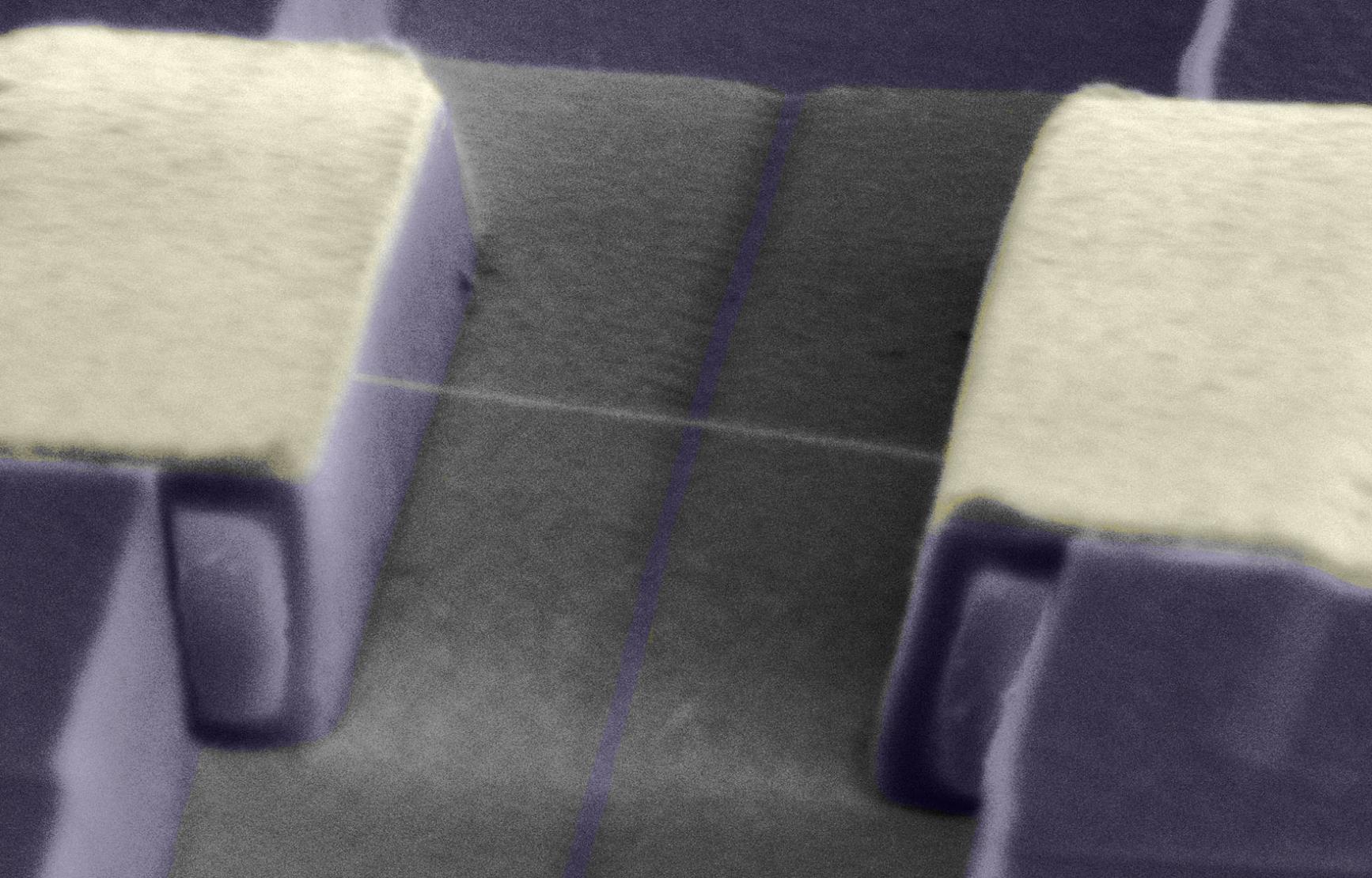
This suspended carbon nanotube played a crucial role in helping the Minot lab and collaborators measure the energy required to add an electron to the Wigner crystal, a notoriously difficult to create (and study) form of matter.
Condensed matter theoretical physicists use advanced computational tools to understand and simulate the physics that underpins emerging new material systems in physics. These computational methods enable modeling of the thermal, electronic and exotic many-body interactions that exist undiscovered in the materials around us.
